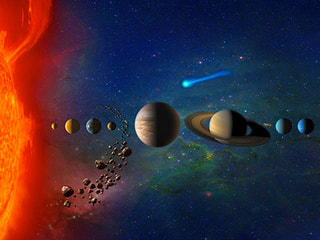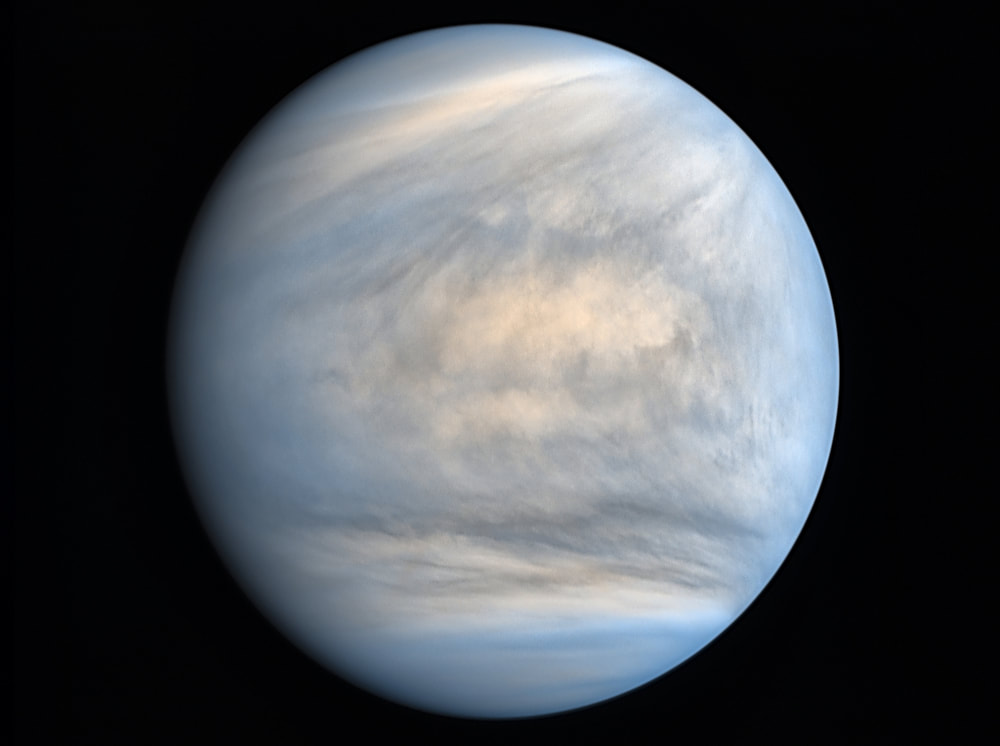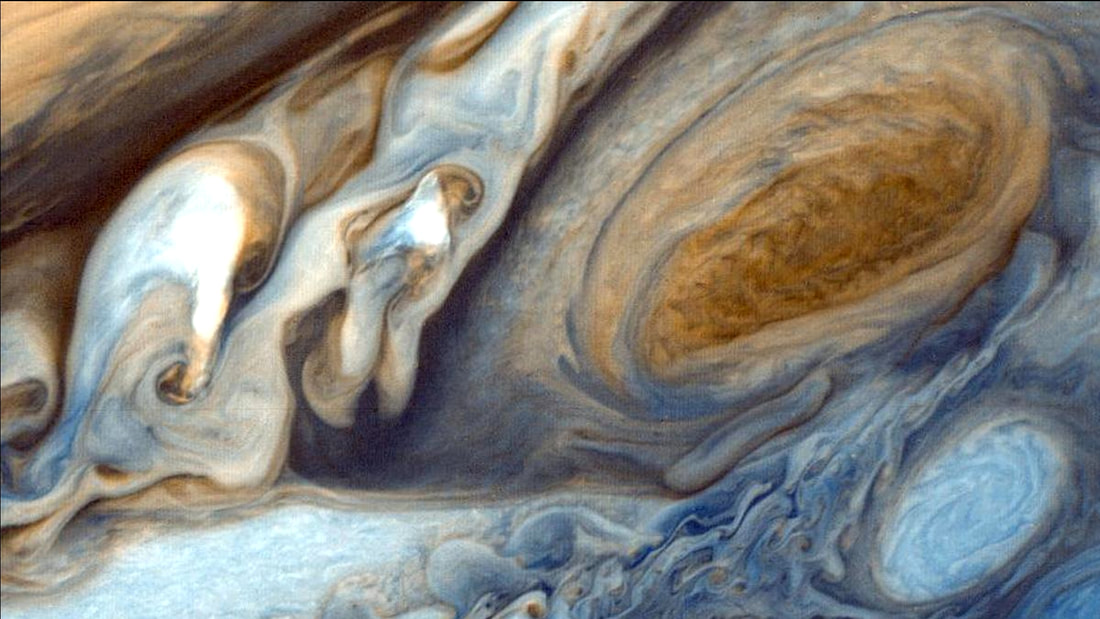The Planets
MERCURY in December, until mid-month, is a bright morning star in Libra rising about 4 am. Its magnitude will be -0.6 and in a telescope it will appear almost full (phase 90%), with a diameter of 5.1”. It then moves back towards the Sun and is lost from view. Mercury reappears in the western evening twilight in late January. On the 26th it will be 1° north of the thin evening crescent Moon.
VENUS is the brilliant evening star in our western evening sky. On December 11 it will be 1.8° south of Saturn and on December 29 it will pass 1° north of the thin crescent Moon. At this time it will have a magnitude of -3.9, and in a telescope it will be seen to have a gibbous phase (85%), 13” in diameter. On January 27 Venus will be 0.1° south of Neptune.
EARTH is at perihelion, its closest point to the Sun, on January 5 at 8:59 pm. Its distance will be 147,099,760 km.
EARTH is at perihelion, its closest point to the Sun, on January 5 at 8:59 pm. Its distance will be 147,099,760 km.
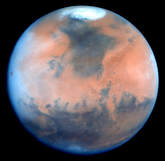
MARS is a morning star (magnitude +1.6), rising about 2:30 am and moving from Libra into Scorpius in December. In a telescope it exhibits a slightly gibbous phase (95%), 4.2” in diameter. In January it will be rising about 2 am, and on the 18th it will pass 5° north of Antares.
 Bright patches in the Occator crater on Ceres. NASA.
Bright patches in the Occator crater on Ceres. NASA.
CERES has a magnitude of +9.0 but is too close to the Sun to be observed.
JUPITER is visible for the first week in December as a bright evening star (magnitude -1.8) low in the west in Ophiuchus. At this time its telescopic diameter will be 32”. It will then be lost from view and will reach conjunction, the far side of the Sun, on December 28. Jupiter will reappear in the eastern dawn sky in mid-January, rising at about 4 am.
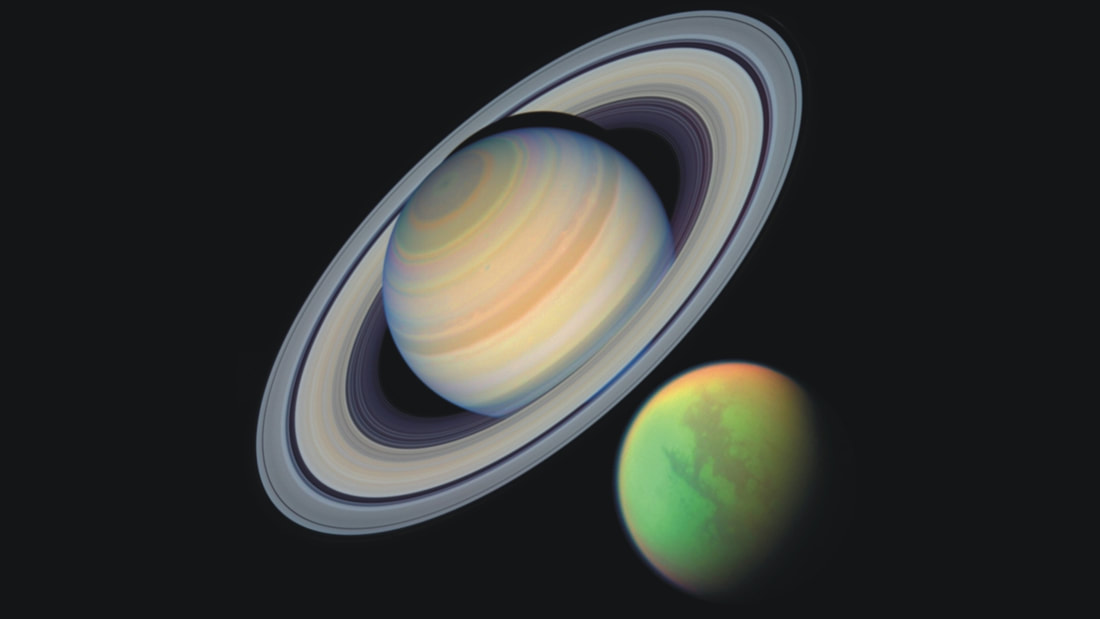
Saturn and its moon Titan
SATURN is, in December, an evening star in Sagittarius setting in the west about 9 pm. Its magnitude is +0.6 and its telescopic diameter 15”. On December 28 Saturn will be 1.2° north of the thin crescent Moon. Moving towards the Sun, Saturn will be lost from view In January and will reach conjunction, the far side of the Sun, on the 14th. Saturn will reappear in the eastern dawn twilight in late January, rising at about 4:30 am.
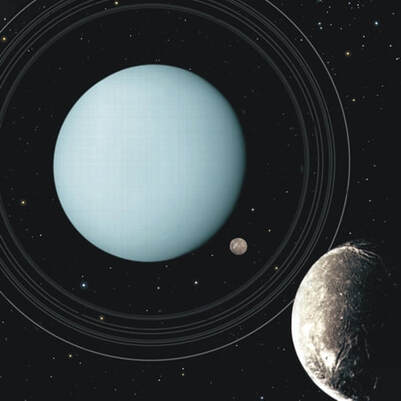
Uranus, seen here with its rings and its icy moon Ariel, is closest to the Earth this month.
URANUS is an evening star in Aries. Its magnitude is +5.8 and its telescopic diameter 3.6”.
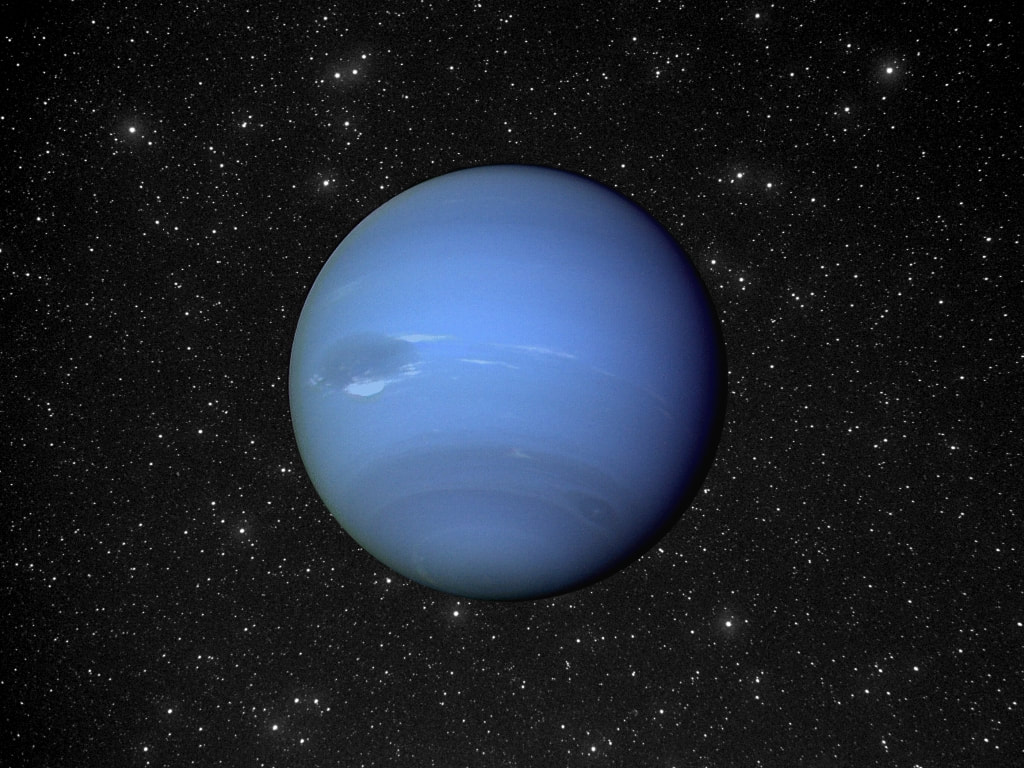
Neptune
NEPTUNE is an evening star in Aquarius. It has a magnitude of +7.9 and a telescopic diameter of 2.2”. On January 27 Neptune will be 0.1° north of brilliant Venus.
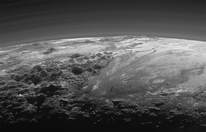
PLUTO is in Sagittarius and too close to the Sun to be observed. Its magnitude is +14.6.
ERIS is a faint evening star in Cetus. Its magnitude is +18.7.
ERIS is a faint evening star in Cetus. Its magnitude is +18.7.
Page Modified 12/12/2019
